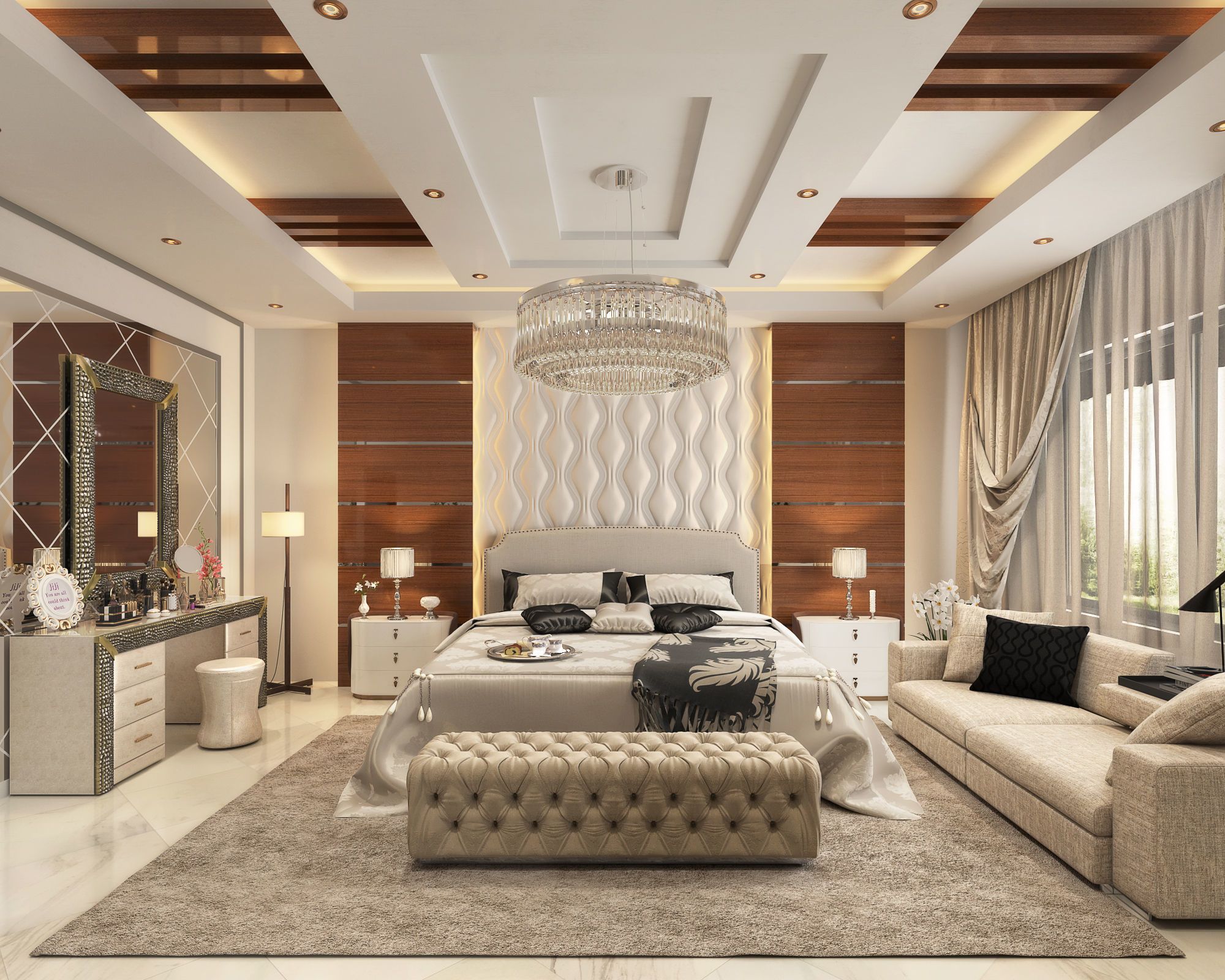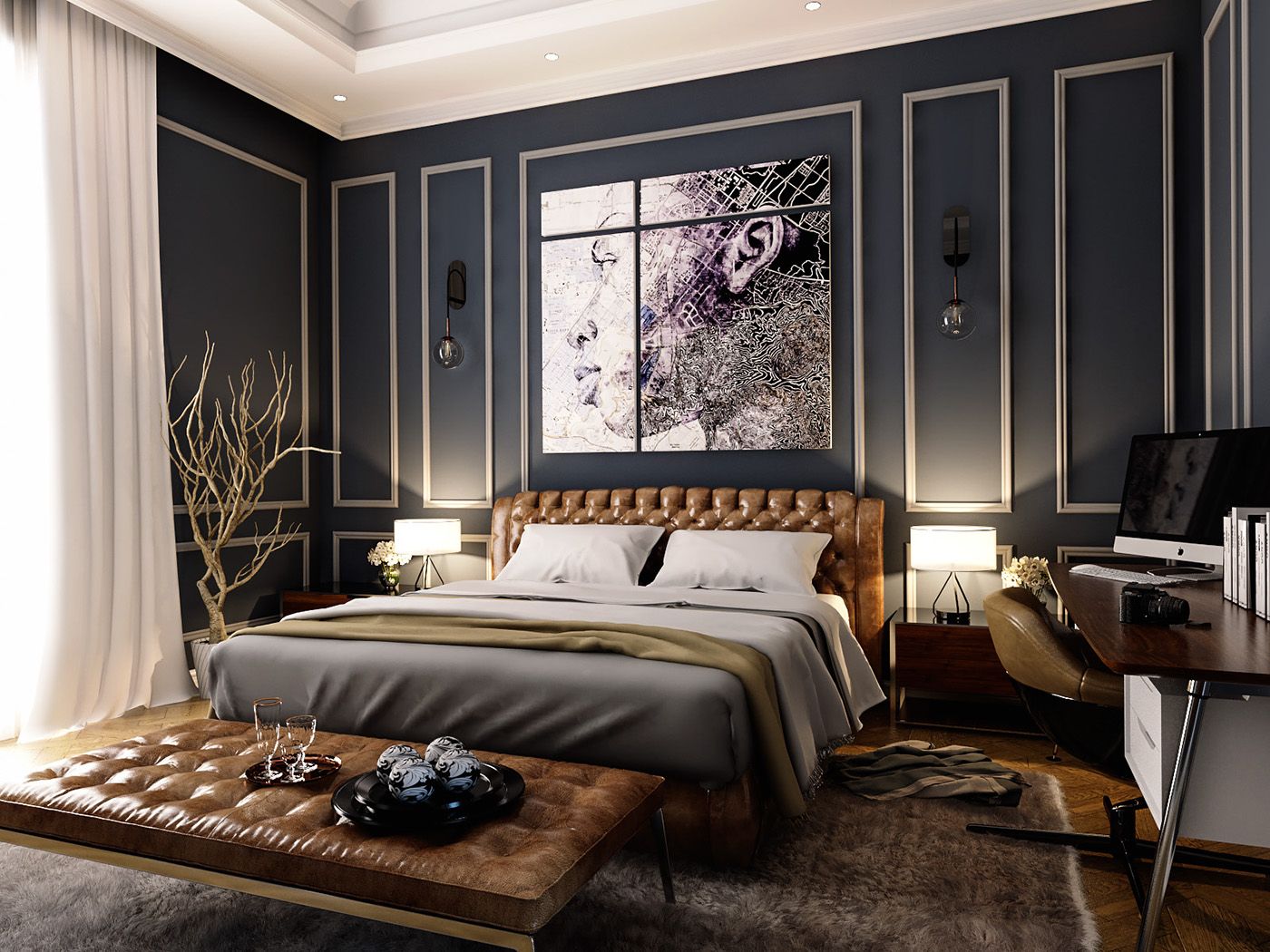Designing the Perfect Designer Bedroom

Creating a designer bedroom that exudes luxury, comfort, and functionality is an art form. It involves a meticulous blend of aesthetics, practicality, and personal preferences. From selecting the perfect color palette to maximizing storage space, every element plays a crucial role in crafting a sanctuary that reflects your unique style.
Color Palette Selection
Choosing the right color palette is paramount in setting the tone and ambiance of your designer bedroom. It can influence the overall mood, create visual interest, and enhance the space’s proportions. A well-chosen palette can make a small room feel larger or a large room feel more intimate.
- Neutrals as a Foundation: Start with a neutral base, such as white, gray, beige, or black. These colors provide a clean canvas for incorporating bolder accents and patterns.
- Accent Colors: Introduce accent colors to add personality and visual interest. Consider using two or three complementary colors that harmonize with your chosen neutral base.
- Color Psychology: Understand the psychological effects of different colors. For instance, calming blues and greens can promote relaxation, while vibrant yellows and oranges can energize the space.
- Natural Light Considerations: Take into account the amount of natural light that enters the room. Lighter colors can brighten a dimly lit space, while darker colors can create a more intimate atmosphere in a well-lit room.
Importance of Natural Light and Ventilation
Natural light and ventilation are essential for creating a comfortable and inviting designer bedroom. They contribute to the overall ambiance, promote well-being, and enhance the space’s functionality.
- Sunlight’s Positive Impact: Sunlight can elevate mood, improve sleep quality, and create a sense of spaciousness. Strategically placed windows and skylights maximize natural light penetration.
- Ventilation for Fresh Air: Proper ventilation ensures fresh air circulation, reducing humidity and improving air quality. Cross-ventilation, achieved through strategically positioned windows or doors, is ideal for optimal air flow.
- Balancing Light and Privacy: While natural light is desirable, consider privacy concerns. Use curtains, blinds, or shades to control light levels and maintain privacy.
Designer Bedroom Layout
A well-designed layout is crucial for a functional and aesthetically pleasing designer bedroom. It ensures a smooth flow, maximizes space utilization, and creates a harmonious environment.
- Focal Point: Identify a focal point, such as a statement bed or a stunning piece of artwork, to anchor the design and create visual interest.
- Traffic Flow: Consider the flow of movement within the room. Ensure that pathways are unobstructed and allow for easy navigation.
- Furniture Placement: Arrange furniture strategically to create distinct zones for sleeping, relaxing, and dressing. For example, a seating area with a comfortable armchair and a coffee table can be placed near a window for relaxation.
- Balance and Symmetry: Strive for balance and symmetry in the layout. A symmetrical arrangement of furniture can create a sense of order and harmony.
Maximizing Storage Space
Storage is paramount in a designer bedroom, especially when creating a clutter-free and organized environment. Smart storage solutions maximize space utilization and enhance functionality.
- Built-in Storage: Consider incorporating built-in cabinets, shelves, or drawers to maximize vertical space and create a streamlined look.
- Multi-functional Furniture: Choose furniture that serves multiple purposes, such as a bed with built-in storage compartments or a chest that doubles as a coffee table.
- Wall-mounted Storage: Utilize wall space with shelves, floating cabinets, or wall-mounted organizers to keep items off the floor and create a clutter-free appearance.
- Hidden Storage: Incorporate hidden storage solutions, such as under-bed storage drawers or ottomans with storage compartments, to keep belongings out of sight.
Bedroom Layout with Walk-in Closet and En-suite Bathroom
A designer bedroom with a walk-in closet and an en-suite bathroom offers unparalleled luxury and functionality. This layout combines the ultimate in personal space and convenience.
- Walk-in Closet Design: The walk-in closet should be spacious and well-lit, featuring ample storage options, such as shelves, drawers, hanging rods, and shoe racks. A full-length mirror is essential for dressing and creating a sense of spaciousness.
- En-suite Bathroom Features: The en-suite bathroom should be a sanctuary of relaxation. Consider incorporating a freestanding bathtub, a walk-in shower, luxurious finishes, and ample counter space. Natural light and ventilation are essential for creating a spa-like ambiance.
- Connecting the Spaces: The walk-in closet and en-suite bathroom should flow seamlessly with the bedroom. Consider using a similar color palette and design elements to create a cohesive and luxurious atmosphere.
Choosing the Right Furniture: Designer Rooms Bedroom Furniture

The foundation of a designer bedroom lies in the careful selection of furniture pieces. Each piece should not only complement the overall aesthetic but also contribute to functionality and comfort. From the bed frame to the lighting fixtures, every element plays a crucial role in creating a luxurious and inviting space.
Selecting the Right Bed Frame
The bed frame serves as the centerpiece of the bedroom, setting the tone for the entire design. Choosing the right bed frame involves considering its style, material, and functionality.
- Style: The bed frame should complement the overall design theme of the bedroom. Popular styles include contemporary, traditional, minimalist, and industrial, each offering a distinct aesthetic. Consider the room’s size, color scheme, and existing furniture to ensure a cohesive look.
- Material: Bed frames are available in various materials, each with its unique advantages. Wood frames offer durability and a classic appeal, while metal frames provide a modern and sleek look. Upholstered frames provide comfort and a luxurious feel.
- Functionality: Consider features like storage drawers, headboard styles, and adjustable height options to meet your specific needs. Storage drawers can maximize space, while adjustable height options provide greater comfort and flexibility.
Choosing the Right Mattress, Designer rooms bedroom furniture
A comfortable mattress is essential for a restful sleep and overall well-being. Factors to consider when choosing a mattress include its firmness, material, and size.
- Firmness: Mattress firmness is measured on a scale from 1 to 10, with 1 being the softest and 10 being the firmest. The ideal firmness level depends on individual preferences and sleeping positions. Side sleepers generally prefer softer mattresses, while back sleepers benefit from firmer mattresses.
- Material: Mattresses are available in various materials, including memory foam, latex, innerspring, and hybrid. Memory foam conforms to the body’s shape, providing pressure relief and a sinking sensation. Latex is known for its responsiveness and breathability. Innerspring mattresses offer support and bounce, while hybrid mattresses combine different materials for a balanced feel.
- Size: Choose a mattress size that provides ample space for comfortable sleeping and movement. Common mattress sizes include twin, full, queen, and king. Consider the size of the bedroom and your sleeping preferences when selecting the right size.
The Importance of Headboards
Headboards enhance the aesthetic appeal of the bed and provide additional support and comfort. They are available in a wide range of styles and materials to complement any bedroom design.
- Style: Headboards come in various styles, from simple and minimalist to ornate and elaborate. Consider the overall design theme of the bedroom and the style of the bed frame when selecting a headboard.
- Material: Headboards are made from various materials, including wood, metal, fabric, and leather. Wood headboards offer a classic and timeless look, while metal headboards provide a modern and industrial aesthetic. Upholstered headboards offer comfort and a luxurious feel.
- Functionality: Some headboards incorporate additional features like built-in shelves, lighting, or storage compartments. These features can enhance the functionality and practicality of the headboard.
Nightstands and Dressers: Practical and Aesthetic Benefits
Nightstands and dressers are essential furniture pieces for a designer bedroom, providing both practical storage and aesthetic appeal.
- Nightstands: Nightstands are placed beside the bed, offering convenient storage for books, lamps, and other bedside essentials. They also contribute to the overall symmetry and balance of the bedroom design.
- Dressers: Dressers provide ample storage space for clothing, accessories, and other personal items. They can also serve as a decorative focal point in the bedroom, adding visual interest and enhancing the overall aesthetic.
Seating Options for a Designer Bedroom
Seating options like armchairs, ottomans, and benches add comfort and style to a designer bedroom.
- Armchairs: Armchairs offer a cozy and inviting space for reading, relaxing, or simply enjoying the ambiance of the bedroom. Choose an armchair that complements the overall design theme and provides comfortable seating.
- Ottomans: Ottomans are versatile pieces of furniture that can serve as a footrest, extra seating, or a coffee table. They add a touch of elegance and functionality to the bedroom.
- Benches: Benches provide additional seating and can also serve as a decorative element in the bedroom. Choose a bench that complements the overall design theme and provides comfortable seating.
Choosing the Right Lighting Fixtures
Lighting plays a crucial role in creating the desired ambiance and functionality in a designer bedroom.
- Functional Lighting: Overhead lighting, such as chandeliers or pendant lights, provides general illumination for the entire bedroom. Consider using dimmable bulbs for adjustable brightness levels.
- Task Lighting: Reading lamps, bedside lamps, and desk lamps provide focused light for specific tasks, such as reading or working. Choose lamps with adjustable arms or shades for optimal light direction.
- Ambient Lighting: Accent lighting, such as sconces, floor lamps, or string lights, adds warmth and a touch of elegance to the bedroom. Use ambient lighting to highlight decorative elements or create a cozy atmosphere.
Renowned Furniture Brands for Designer Bedrooms
Several furniture brands are renowned for their designer bedroom collections, each offering unique styles and design philosophies.
- Restoration Hardware: Restoration Hardware is known for its luxurious and timeless designs, featuring classic silhouettes and high-quality materials.
- West Elm: West Elm offers a modern and eclectic aesthetic, with a focus on sustainable and ethically sourced materials.
- CB2: CB2 caters to a contemporary audience, featuring sleek and minimalist designs with a focus on functionality and innovation.
- Ethan Allen: Ethan Allen is known for its traditional and elegant designs, with a focus on craftsmanship and durability.
- Arhaus: Arhaus offers a blend of modern and traditional styles, with a focus on natural materials and handcrafted details.
